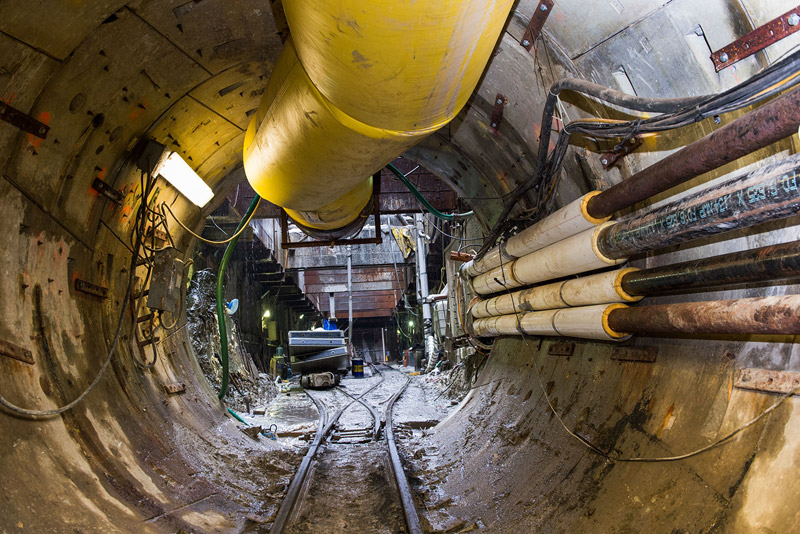Siphon Tunnel activated
1 November 2016US - A new water tunnel in New York connecting Brooklyn to Staten Island is now activated following a ceremony October 29. The tunnel saw years of delay following the devastation of Super Storm Sandy in 2012.
The USD 250M tunnel ensures drinking water supply in the aftermath of a disaster. The 2.6km-long, deeper tunnel can deliver up to 150M gallons of water per day to Staten Island from Brooklyn under the New York Harbor.
Contractor Tully/OHL USA JV procured a 3.8m diameter EPB TBM from Caterpillar in 2012, which was designed to drive through highly variable clays, sands, weathered rock and boulders. It was launched from the 35m-deep Staten Island shaft, boring towards the 40m deep Brooklyn shaft, in August 2012. The EPBM progressed approximately 1,600ft towards Brooklyn when operations were suspended on the evening of October 28, 2012 in advance of the approaching Hurricane Sandy. The storm flooded the Staten Island shaft and the excavated tunnel with sea water and severely damaged the TBM.
The saltwater severely corroded the TBM, which sat idle until July 2013. During that time, CAT announced its impending closure of its TBM business, and the contractor looked to other manufacturers. Robbins helped rebuild the machine, a process that took about four, much of it done in the tunnel under water pressure. Crews were able to return to mining on April 14, 2014.
The 72-inch (1.8m) siphon was excavated at a depth of 100ft (30.5m) and replaces the two existing water connections that run from Bay Ridge in Brooklyn to Stapleton and Tompkinsville on Staten Island. Mining reached completion in early 2015.
"Our city is better prepared to tackle 21st century threats like Sandy today than ever before. This water tunnel is one measure that will help Staten Island spring back to action in the event of a disaster that would disrupt the water supply," said mayor Bill de Blasio. "Measures like these are being implemented across the City, from Red Hook to the Rockaways, our City is becoming Safer and more resilient every day.”

